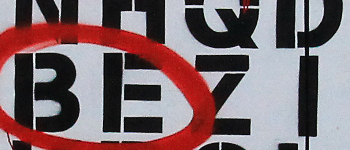The links went AWOL last week for various good reasons, but the urge to surf can’t be repressed for long, so we’re back. Sorry if you missed us.
Some politics first. The Guardian this week covered Philip Pullman’s impassioned denunciation of the widespread threat to British libraries caused by the UK government’s proposed swingeing cuts. He also attacked the ludicrous fig leaf proffered by the government’s so-called ‘big society’ which would replace real trained librarians with as-yet-nonexistent volunteers. There’s a day of action on February 5, which is mandatory if you’re in the UK. I will be checking on you.
Also at The Guardian, Rachel Cusk reread Kazuo Ishiguro’s Never Let Me Go.
Resetting the mood to the gleefully juvenile, Chuck Wendig sat around in his underpants and reminded us that writing isn’t actually a dreadful career choice after all. Oh and he invented the word cock-waffle, which he gifted it to the world gratis. So that’s a bonus.
At The Kill Zone, Kathryn Lilley offered some real actual scientific evidence that your inner critic stifles creativity and Jordan Dane provided tips on crafting villains and anti-heroes.
At The Book Deal Alan Rinzler offered advice on plot untangling.
Lydia Sharp, writing at The Sharp Angle, came to the reluctant conclusion that a strong plot concept is a better starting place than a great character.
Edittorent had a storming week. Alicia looked at some techniques to reconcile important fragments of dialogue so that an intervening period is bridged. Theresa used a Dan Brown passage to illustrate the way that setting relates to tone. Brown uses three great buildings to conjure a monumental tone, relating it back to the POV character with feeling words. Then he overturns the mood with a final contrasting sentence. Tantalizingly Theresa suggested that the passage may not have worked for her, but left the conclusion to commenters.
At The Other Side of the Story, the insanely informative Janice Hardy continued her run of great posts with a pre-submission checklist, and a look at the hints, clues and foreshadowing you can add to your story during the edit. Then just as I was compiling this list she posted a guide to goals, conflict and stakes, examining each element at both the story and character level.
Darcy Pattison looked at foreshadowing too this week, and how to provide hints and mirror future action while keeping your narrative in the present moment.
Scott G.F Bailey, on the hand, went oblique and discussed sideshadowing – references to events and possibilities outside the scope of a story that help create a rich-seeming world, and make the narrative seem less like a closed system.
Getting back to the inner lives of characters Jason Black looked at character development in the middle of a novel. He described the epiphany moment in which a character first understands a personality trait revealed by events in the story. While you’re at Plot to Punctuation check out the first part of the series on characters and beginnings, and another post that reveals seven ways to show character growth.
Meanwhile, back at Edittorent, Alicia was shoring up the middle too. She reminded us that the turning point scene should have ramifications for both plot and character — it’s not enough for something big and important-seeming to just happen.
Jeannie Campbell, the Character Therapist, demonstrated a card game that can help reveal your character’s motivating need. Apparently, according to David McClelland’s Learned Needs Theory, there are three kinds of motivating need: for power, for affiliation and for achievement. As an organizationally unambitious loner, I guess my need is achievement. I’ll keep you posted.
Jason Black’s series finale on characters and endings is still to come, but Lydia Sharp cut to the chase and revealed that a story’s conclusion is more satisfying when it depends on the resolution of a character flaw.
Go Into The Story was compelling as usual this week. In particular, a set of extracts from interviews with Charlie Kaufman caught my eye. Kaufman wrote Being John Malkovich and Adaptation. In the excepts he spoke about his method and how it contrasts with traditional ‘formulaic’ screenwriting.
Adrian Kok and Karel Segers, operatives at The Story Department, first broke down the structure of the movie District 9 and then analyzed it using the hero’s journey paradigm.
At the FT Adam Haslett reviewed How to Write a Sentence and How to Read One by Stanley Fish.
Larry Brooks was turning suckage into gold, by mining lousy real-life experiences for story ideas.
At TalkToUniverse Juliette Wade got physical with aliens and considered the niceties of extra-terrestrial body language.
The Literary Lab put out a notice that the Notes From The Underground anthology (in which I happen to have a story ahem) is coming Real Soon Now.
If you like Inflatable Ink’s round up, and want to read our links daily as we research them don’t forget to follow us on Twitter.




